Latest plans for downtown library: renovation, not demolition
After several recent attempts, Riverside officials have now scrapped expensive plans to construct a new downtown library in favor of a more modest renovation of the existing building.
We realize this new directive from the city council may not serve all interests and parties involved, and we do agree a modest renovation/refurbishment is warranted. However, we also admit we’re glad to see the focus back to renovation and reuse versus complete demolition. Why? First and foremost, it allows for potential preservation of the building (and most/all of its architectural features). Second, a renovation plan is typically less costly, and thus, more likely to get funded/completed.

Definitely one of Riverside’s best mid-century buildings — and certainly its most under-appreciated — construction of the downtown Central Library (a.k.a. Main Library) was approved by voters following a $1.69 million bond measure in October 1961. The bond measure was one of four “city improvement” proposals on the ballot — police building, library building/branches, parks, and streets — with only the police and library bonds winning by carrying the necessary two-thirds voter approval.
After several months delay due to controversy over the location and size of parking lots surrounding the new library building — due in part to the complexities involving the existing Universalist Church on the northeast corner of Seventh (Mission Inn Avenue) and Lemon — ground was formally broken for the new library on June 25, 1963.
Initial plans were for the city to acquire the remainder of the entire block, including the church. But a purchase agreement couldn’t be reached and the city chose not to acquire it via eminent domain (with likely demolition plans, which we’re very glad did not happen). As such, in an effort to help make up for less parking on the sides, the new library had to be moved forward and placed closer to Seventh (Mission Inn Avenue) to allow for some parking behind it. This new placement also required the back 20 feet of the existing Carnegie Library to be removed while the old library was still in use.
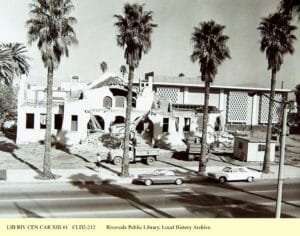
Though partially opened to the public on December 23, 1964, the new $1.3 million (some reports say $1.6 million) library was officially dedicated on March 21, 1965 following final cleanup of the Carnegie site and completion of the parking lots and front landscaping/entrance area.
Initially praised for its size and modern interior, the new library — the most expensive public building the city had built to date — was also panned by some for its stark and mostly windowless exterior. Moreover, many were bitter over the replacement of the beloved 1903 Carnegie Library, which officially closed November 20, 1964, with demolition beginning in December 1964, shortly before the new library opened behind it. As such, the modern library has spent much of its life thus far suffering from harsh criticism. (Indeed, the loss of the Carnegie was a travesty in its own right. But demolishing the modern library would essentially be making the same mistake a second time.)
However, as a prime example of the New Formalism architectural movement — which was popular for public, institutional, and financial buildings during the 1960s — the downtown library includes several hallmarks of this mid-century style: rigid box-like appearance, floating pedestal, brick veneer, strong pilasters, large overhang, fanciful canopy, and period lighting. The building was designed by Riverside-based architectural firm of Moise, Harbach & Hewlett (with assistance from library/architectural consultants Fickes & Fickes of Arcadia, California).
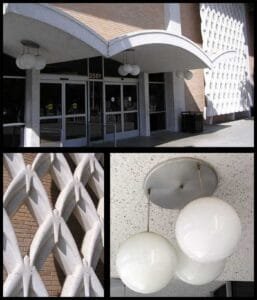
Particularly striking are the building’s interwoven “dove” screens — a symbol not likely coincidental considering the advancing Cold War era in which the library was built. As such, we feel any major modification of the screens — or worse, their removal — in any renovation plan would be a shame and essentially strip the building of its full and meaningful context. (However, we could do without the blue LIBRARY lettering above the entrance, which is not original and looks very tacky.)
Finally, we also realize the downtown library’s bold and futuristic architecture stands in stark contrast to its neighbors, the most notable being the nearby Mission Inn. The two buildings are from vastly different eras and indeed are distinctly different. However, we feel it’s this very juxtaposition that actually makes both buildings more unique in their own right, bringing out both the best and worst features of each (as good organic architecture should).
All in all, we believe the 1965-era library is one of the best examples of mid-century modern architecture in the Inland region (and maybe even Southern California). And we believe it’s worth enhancing and preserving. What do you think?
(Note: The city is currently (2008) conducting outreach meetings with interest groups and the general public. As part of the outreach, the city is providing residents and stakeholders the ability to comment via the Downtown Library Rehabilitation Survey. Read the questions and then submit your responses. We urge anyone interested to spend a few minutes to complete the three-question survey.)
(2025 UPDATE: After several years — and a few different concepts — deciding whether to renovate, expand, or relocate the downtown library, plans finally moved forward in February 2016 to build a new library. Located three blocks to the west on the same street (Mission Inn Avenue) as its predecessor, designs for the new Main Library were approved in October 2017. Construction began in March 2019 with completion in February 2021. However, due to the Covid-19 pandemic, opening to the public was delayed until June 2021. The 1964/65 Mid-Century Modern library was then renovated into the Cheech Marin Center for Chicano Art & Culture — aka “The Cheech” — that opened in June 2022 as a companion to the Riverside Art Museum. And groundbreaking for an expanded Riverside Metropolitan Museum — renamed Museum of Riverside in 2019 — took place in June 2025, with completion and reopening expected sometime in 2027.)
Previous
- RaincrossSquare.com – Library/museum task force produces ‘guiding principles’ for separate expansions (June 2008) | Task force favors separate library, museum expansions (June 2008) | Library-museum task force convenes (April 2008) | Library should remain downtown (July 2007)
Riverside Main Library – 1903-2021
From Carnegie to MCM to The Cheech
Sources: City of Riverside, Riverside Public Library, Riverside Press-Enterprise (DE-19611018, DE-19620306, DE-19620404, RP-19620510, RP-19630228, DE-19630327, DE-19630403, DE-19630626, RP-19641214, RP-19641223, RP-19650226, PE-19650320)
2025 PAGE UPDATE: Added additional context and specific info regarding architects/consultants, October 1961 library bonds, June 1963 groundbreaking, December 1964 opening, and March 1965 dedication; added additional images and photo gallery; added 2025 update; removed outdated links to newspaper articles and third-party websites, including survey.
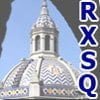


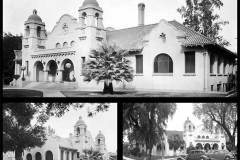
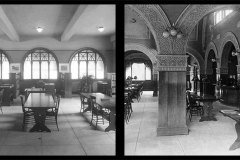
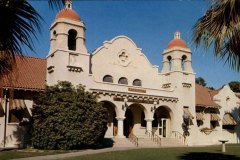
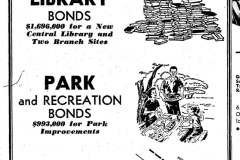

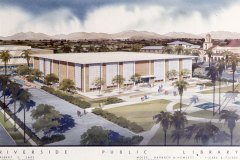
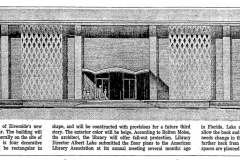
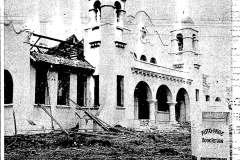
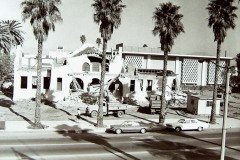

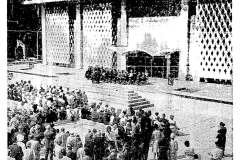
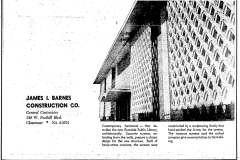
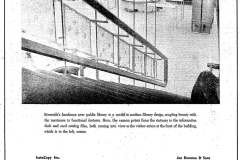
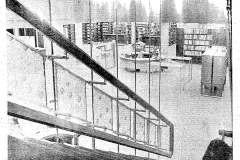
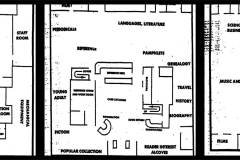
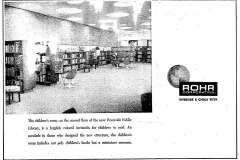

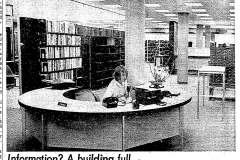
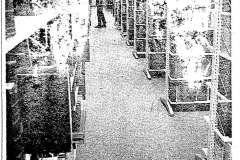
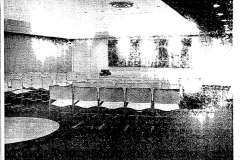
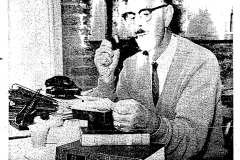
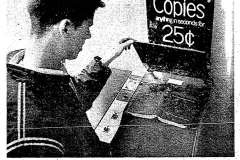
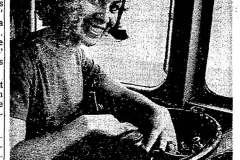
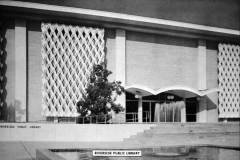
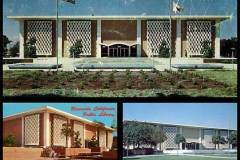

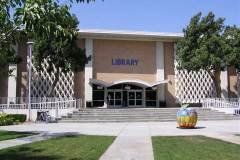
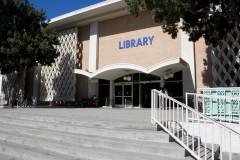
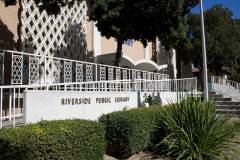
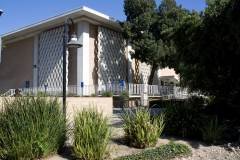

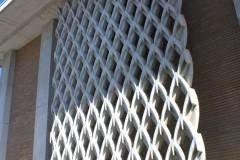
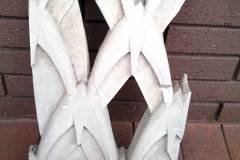
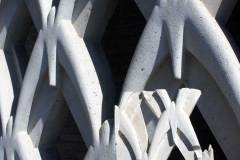

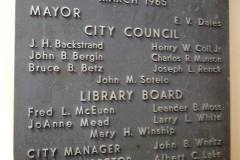
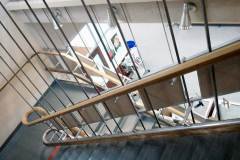
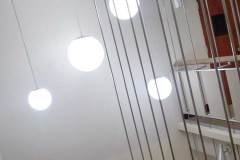
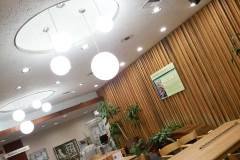
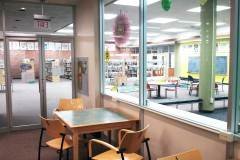
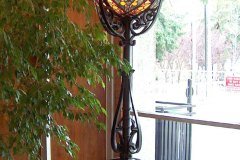
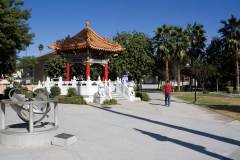

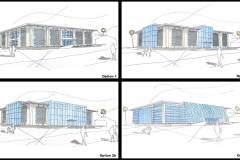
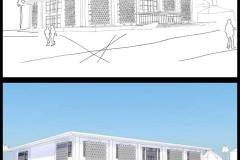
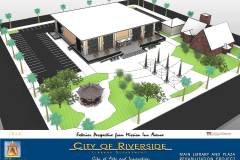
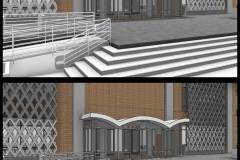
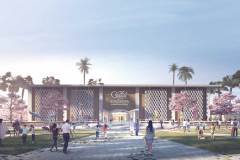
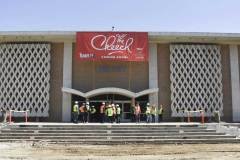
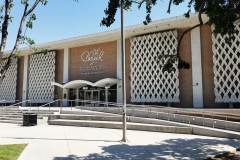
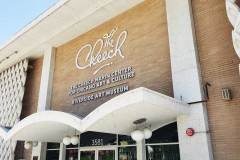
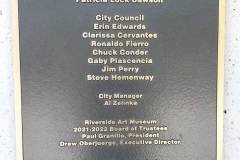
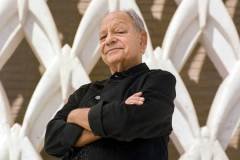

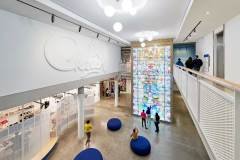
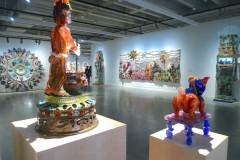
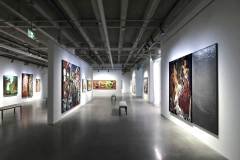
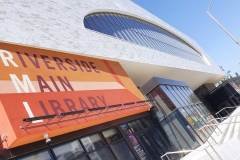

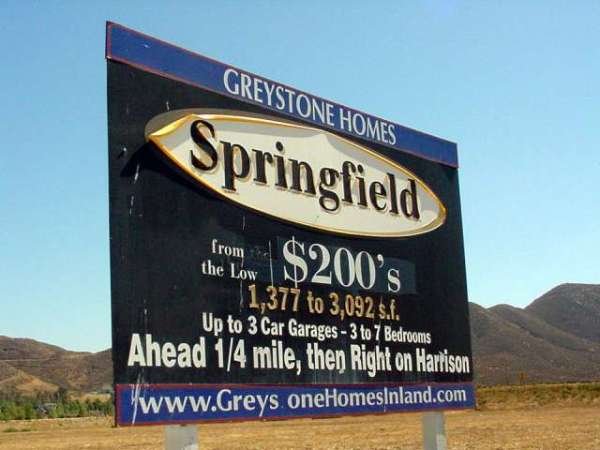
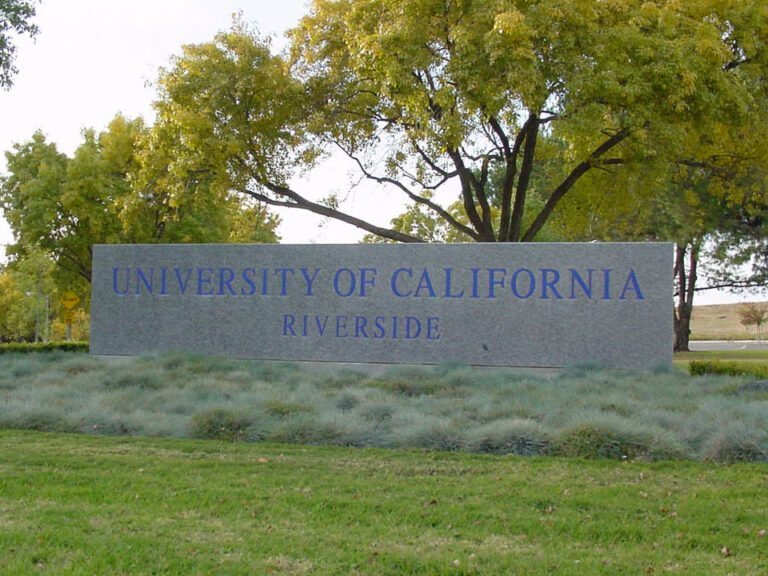
I wish I could be as optimistic as you regarding the preservation of this building. Based on my conversations with members of the City Council, they are hell-bent on covering up the existing building with some kind of architectural veneer that suits their preference for McMissionizing everything.
The questionnaire confirms this intent. All of the questions are about the architecture and exterior. There is nothing in the questions about library operations and use. The City is so focused on removing this building (physically or virtually), but every dollar spent on exterior “improvements” is a dollar not spent in improving the interior and making the building more functional and inviting.
If they are going to focus on the exterior, I would suggest a complete restoration to the original, but with the inclusion of the Chinese Pavilion, since that’s not going anywhere. They must remove the “LIBRARY” sign and I would get rid of the hand railings too, which are not original and detract from the floating pedestal illusion. I would love to see the fountains and open space again – how much better the space would be in its original configuration for the Lunar Fest and Festival of Lights!
But what we’re going to get is something akin to what was done to the parking structures on Orange, and what will be added to the Convention Center. A City that could approve the ugly new Hyatt, and the terrible, horrible, no-good, very bad parking structure next to City Hall (called the “Versace Building” by some) shouldn’t be the final arbiters of architectural taste.
Unfortunately I am in a very small minority regarding the library. The loudest voices are from those who miss the Carnegie Library. I was born the year it was torn down, and came to Riverside in 1990, so the current library is the only one I’ve known. Destroying the Carnegie was a mistake. To remedy that mistake by destroying or covering up the current library would repeat the same mistake. Two wrongs don’t make a right.
There may be a way to make the current library blend in with the rest of the buildings that surround it, but I don’t have a lot of faith that the City can pull it off.
@Michael — Thanks for the comment and we agree 100%. We too feel tearing down — or extensively modifying — the 1965-era library would be akin to tearing down the original Carnegie. In other words, the city would simply be repeating the same mistake.
Fortunately, the tear down is now off the table, but we certainly do not want to see it McMissionInn’d as was done to the two mid-century parking structures. However, we also realize there may have to be compromises — on both sides of the fence. Thus, we’re willing to see what options come forth from the city, one of which we expect to involve a modest makeover that essentially keeps the key architectural features intact.
And although we too are somewhat skeptical about the intentions of the city council and are afraid that misguided public sentiment has been driving the process, we’ve also noticed some groundswell of support for the current “modern” library the past couple of years. Thus, we’re encouraging others to express their opinions and/or get involved. Also, it helps that both Old Riverside Foundation and Riverside Historical Society are actively involved in the process — but folks still need to speak up as well!
P.S. — Here’s an Old Riverside Foundation blog post on the library that does a great job explaining the building’s architectural details.
I’ve always been on the other end for the longest time, that the library stands out as a sore thumb on Mission Inn Blvd…. minus the “dove screens” which I think are awesome. I was not alive to see the Carnegie destroyed nor the Central Library built, but it definitely is a shame the Carnegie was lost to time.
Cutting my rant short, I think I’m a bit torn now on what I would want for the future of the Central Library: part of me wants to see it completely torn down to start anew, yet the other half would like to see it preserved somewhat in accordance to the ways that have been discussed here. To be clear, I’m not in complete agreement with the idea that it should be brought back to its original design. I find certain problems with the building’s design that were just as much of a problem then. Of these issues, one has already been mentioned: lack of windows. I also find the front entrance to be boring or at least lacking detail (which I could argue for the sections of the sides where there are no “dove screens”). Finally, I believe its recessed footprint feels architecturally confusing and frustrating as much as it is interesting.
One thing I was looking forward to about the potentially from-scratch new building, was its proposed footprint that would bring it out to the curb along Orange St. and close enough on Mission Inn Blvd. This would put it “inline” with the rest of the buildings, and make it feel more “proper” for a downtown setting.
Since this is now not the case, I’m leaning toward preservation of the “essence” of the Central Library as much as possible, but with contemporary needs met. I do agree that bringing back the fountains would be cool, although I’d want to see them modified with a grander water presentation. Maybe kill the mosaic tile texture this time around too, and instead go with sleek concrete (maybe with a little style in the form), or even the larger mission tiles to tie in with the Mission Inn next door.
The major change I’d want to see is windows. I remember studying for school in there and the feeling is so dreary and cutoff from everything. In some ways the seclusion works to some advantage to stay focused when studying or reading, but natural light is also calming and welcoming too while working, and I believe it would be good to have an even mixture of both where people can pick and choose for themselves. So here’s my solution: knock out the boring walls that do not have the dove screens (the middle on each side of the building), and make those areas glass windows top to bottom. Think somewhat along the lines of the main entrance of the Forever 21 building (Broadway building) at Tyler and how it opened the entrance up for all to look in. I think that could look very cool and maintain much of the building’s character (most importantly the dove screens). Plus, the building will be much more inviting as a result, like a well-designed convention center even.
There could still be a need to expand the library via the front, which will negate much of what has been talked about here, but I’ve thought of some solutions that could work by utilizing a Greek Revival or colonial-like cement front entrance with columns and such. However, this could prove costly. I wouldn’t want to see it done with stucco or the “McMission” style though for sure ;P .
Thanks for letting me share!
@Jason — There may indeed be possibilities in adding windows to the current design. We’ll have to wait and see what the architects come up with. We just hope that any windows added respect the original design. And we agree that bringing back the fountains would be nice, but likely doubtful due to costs and maintenance issues. As for the recessed footprint, we also agree that such footprints don’t generally belong in a downtown setting, and indeed, are more akin to suburban development. However, we think certain instances — such as civic and public plazas — are notable exceptions. In essence, we feel the library frontage fits this exception (though it could use a but of work).
Thanks for commenting!